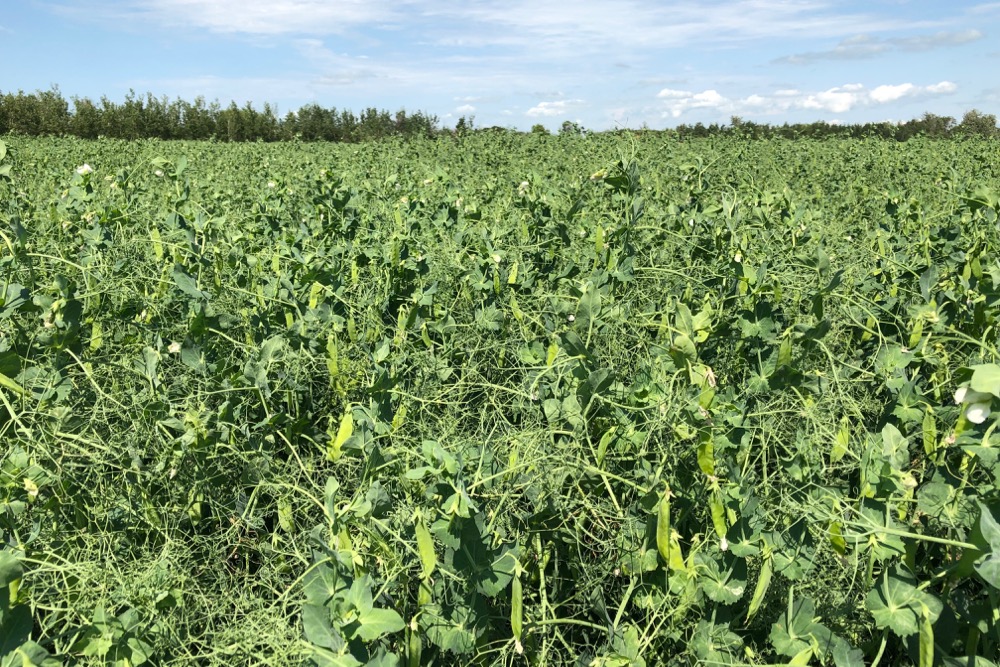Pulse weekly outlook: Peas, lentils faring well but threats remain
| 2 min read

File photo of a pea crop south of Ethelton, Sask. on Aug. 1, 2019. (Dave Bedard photo)
MarketsFarm — Growing conditions for peas and lentils in Saskatchewan during the spring can be described as variable.
While western parts of the province continued to endure dry conditions carried over from last year’s drought, regions in the east were drenched with near-continuous rainfall to go along with below-normal temperatures.
Lionel Ector, president of Diefenbaker Spice and Pulse, said while pea and lentil crops in his area — near Elbow, Sask., about midway between Saskatoon and Moose Jaw — are faring well for now, they have missed out on recent rains in surrounding areas.
“We’ve been measuring our rain in 10ths (of an inch). (It’s been) well under half an inch, whenever we get any (rain). We’ve been looking for inches because there’s no subsoil moisture,” he said.
“It’s that time of year where the heat and long days will challenge those crops.”
Despite the challenges ahead, Ector said seeding conditions were the most favourable in recent memory.
“They were near ideal and it was the first time in many years. We’ve got a few 10ths here, we’ve got a few 10ths there. We didn’t have any long seeding delays and it gave an opportunity for our sloughs and potholes to dry up, so we could seed more acres.”
Parts of southern Alberta and western Saskatchewan have seen much-needed relief with rainfall last week, he said. On the other hand, areas near Moose Jaw have been quite dry.
Lentil crops will start to flower in two weeks — which is when they will need moisture to develop.
“If we get the hot, dry weather, you get a lot of flower blast and yields reduced,” Ector added.
Looking at his own fields, durum and other cereal crops were adversely affected by the heat and dryness. However, Ector’s canola and lentils, which germinate later, appeared to be in good condition despite yet another threat.
“What I am seeing in the lentil fields is an awful lot of kochia and (other) weeds. It’s going to frustrate a lot of people at harvest. They may lose a small percentage of the harvestable crop,” he said. “The weed control the last number of years has been very difficult.”
— Adam Peleshaty reports for MarketsFarm from Stonewall, Man.


